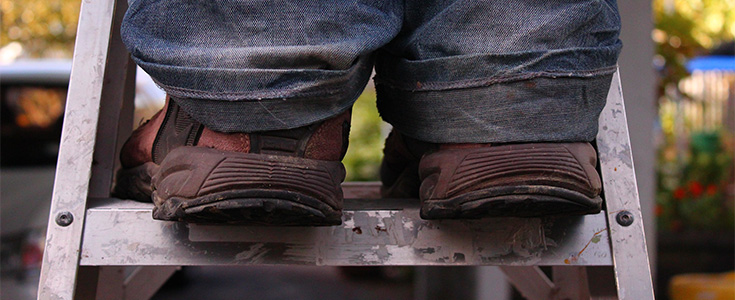What’s The Difference Between Platform Height And Working Height?
24/09/2017
Whether you’re keen on DIY or you’re a professional tradesman, you may well have heard the two terms ‘platform height’ and ‘working height’ being mentioned a lot in regards to ladders. However, they’re not exactly the same thing, which can understandably lead to some confusion. It’s one of the more common queries our experts hear at Browns Ladders, so this week on the blog we’re taking a moment to set things straight.
The Key Difference Between Working And Platform Height

While these terms can both be used with regard to ladders, they’re most often used with respect to scaffold towers. Essentially, the platform height is the height at which the platform can be raised – in other words, the distance between the platform and the ground. Meanwhile, the definition of working height is equated to the area that an average person can reach while stood on that platform. In other words, an easier way to think of it is that when you’re standing on a scaffold, platform height refers to where your feet are while working height refers to where your maximum reach is. If you’re painting, your working height would be the highest you can reach with the paintbrush. You can see then, why platform height is always lower than working height.
Best Practices At Safe Working Height

Generally, safe working height on a ladder is defined as about ¾ of the way up it. If you need to go higher than that, you may think it looks possible but it definitely won’t be safe – you’ll need to get a higher ladder! The very top step of a stepladder or the highest rung of an extension ladder should never be used as a step; there’s far too much of a risk that you’ll unbalance the ladder, which can lead to a very dramatic fall and potentially fatal fall from a height.
Light duty tasks that don’t require a great deal of strength – or which do for a very short duration – can be done at relatively high working heights, assuming of course that you’ve taken all the relevant steps to ensure complete safety while working at height. Meanwhile, heavier-duty tasks that require a lot of physical strength, dexterity or co-ordination are best done closer to the ground, or in very short bursts. Becoming fatigued at height can lead to mistakes, which again can lead to accidents. For this reason, when planning a job it’s vital to ensure that you’ve got a ladder that’s the right height for the job.
A Few Examples Of Working Heights

Just before we finish off, we’ll look at a few practical examples. Our Lyte Lift Tower Scaffold details both the exact platform height as well as the average working height for each variant, helping you to make an informed decision on which tower is best for your needs. Meanwhile, with step ladders like our Zarges Z600 Anodised Trade Platform Step, you can see that the tallest model has a platform height of 2.20m. Going by the general rule that safe working height is ¾ of your height, a safe working height would therefore be approximately 3.85m.
At Browns Ladders, we’ve got a huge range of products designed for both home and professional use – you can browse our stock here, or give us a call on 01254 615517 if you have any further questions or queries. Our experts are here to help!
Don’t forget to follow us on Twitter: @brownsladders